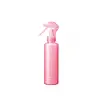What's inside
What's inside
 Key Ingredients
Key Ingredients

No key ingredients
 Benefits
Benefits

 Concerns
Concerns

 Ingredients Side-by-side
Ingredients Side-by-side

Water
Skin ConditioningAlcohol
AntimicrobialAmodimethicone
PEG-50 Hydrogenated Castor Oil
EmulsifyingGlycerin
HumectantParfum
MaskingPalmitamidopropyltrimonium Chloride
C12-14 Pareth-5
CleansingC12-14 Pareth-7
EmulsifyingPropylene Glycol
HumectantC12-14 Pareth-12
EmulsifyingStyrene/Vp Copolymer
Ethylhexyl Methoxycinnamate
UV AbsorberArgania Spinosa Kernel Oil
EmollientPhytosteryl/Octyldodecyl Lauroyl Glutamate
Skin ConditioningWater, Alcohol, Amodimethicone, PEG-50 Hydrogenated Castor Oil, Glycerin, Parfum, Palmitamidopropyltrimonium Chloride, C12-14 Pareth-5, C12-14 Pareth-7, Propylene Glycol, C12-14 Pareth-12, Styrene/Vp Copolymer, Ethylhexyl Methoxycinnamate, Argania Spinosa Kernel Oil, Phytosteryl/Octyldodecyl Lauroyl Glutamate
Water
Skin ConditioningAlcohol
AntimicrobialAmodimethicone
Glycerin
HumectantPhenoxyethanol
PreservativeCetrimonium Chloride
AntimicrobialDimethicone
EmollientSodium Citrate
BufferingDicocodimonium Chloride
EmulsifyingCitric Acid
BufferingSteartrimonium Chloride
PreservativePEG-200 Hydrogenated Castor Oil
EmulsifyingHydrolyzed Hyaluronic Acid
HumectantCreatine
Skin ConditioningCetearamidoethyl Diethonium Hydrolyzed Rice Protein
Sodium Dilauramidoglutamide Lysine
HumectantPropanediol
SolventDistearyldimonium Chloride
Behentrimonium Chloride
PreservativeGamma-Docosalactone
Skin ConditioningPhytosterols
Skin ConditioningCeteth-20
CleansingIsopropyl Alcohol
SolventWater, Alcohol, Amodimethicone, Glycerin, Phenoxyethanol, Cetrimonium Chloride, Dimethicone, Sodium Citrate, Dicocodimonium Chloride, Citric Acid, Steartrimonium Chloride, PEG-200 Hydrogenated Castor Oil, Hydrolyzed Hyaluronic Acid, Creatine, Cetearamidoethyl Diethonium Hydrolyzed Rice Protein, Sodium Dilauramidoglutamide Lysine, Propanediol, Distearyldimonium Chloride, Behentrimonium Chloride, Gamma-Docosalactone, Phytosterols, Ceteth-20, Isopropyl Alcohol
Ingredients Explained
These ingredients are found in both products.
Ingredients higher up in an ingredient list are typically present in a larger amount.
Alcohol comes in many different forms. Different types of alcohol will have different effects on skin. This ingredient is usually an astringent alcohol.
These alcohols are drying on the skin. They may strip away your skin's natural oils and even damage your skin barrier. Astringent alcohols may also irritate skin.
Other types of astringent alcohols include:
According to the National Rosacea Society based in the US, you should be mindful of products with these alcohols in the top half of ingredients.
Any type of sanitizing product will have high amounts of alcohol to help kill bacteria and viruses.
Fatty alcohols come from plant oils such as coconut oil. These can help hydrate the skin and are non-irritating. Some fatty alcohols include cetyl and stearyl alcohol.
Learn more about AlcoholThis water-soluble silicone is used for its hydrating and softening properties. It is used to add a silky feel to skincare products and has great benefits for haircare.
In haircare, this ingredient:
- Adds shine
- Protects color
- Offers thermal protection
- Boosts hair strength
- Does not build up as easily
Glycerin is already naturally found in your skin. It helps moisturize and protect your skin.
A study from 2016 found glycerin to be more effective as a humectant than AHAs and hyaluronic acid.
As a humectant, it helps the skin stay hydrated by pulling moisture to your skin. The low molecular weight of glycerin allows it to pull moisture into the deeper layers of your skin.
Hydrated skin improves your skin barrier; Your skin barrier helps protect against irritants and bacteria.
Glycerin has also been found to have antimicrobial and antiviral properties. Due to these properties, glycerin is often used in wound and burn treatments.
In cosmetics, glycerin is usually derived from plants such as soybean or palm. However, it can also be sourced from animals, such as tallow or animal fat.
This ingredient is organic, colorless, odorless, and non-toxic.
Glycerin is the name for this ingredient in American English. British English uses Glycerol/Glycerine.
Learn more about GlycerinWater. It's the most common cosmetic ingredient of all. You'll usually see it at the top of ingredient lists, meaning that it makes up the largest part of the product.
So why is it so popular? Water most often acts as a solvent - this means that it helps dissolve other ingredients into the formulation.
You'll also recognize water as that liquid we all need to stay alive. If you see this, drink a glass of water. Stay hydrated!
Learn more about Water